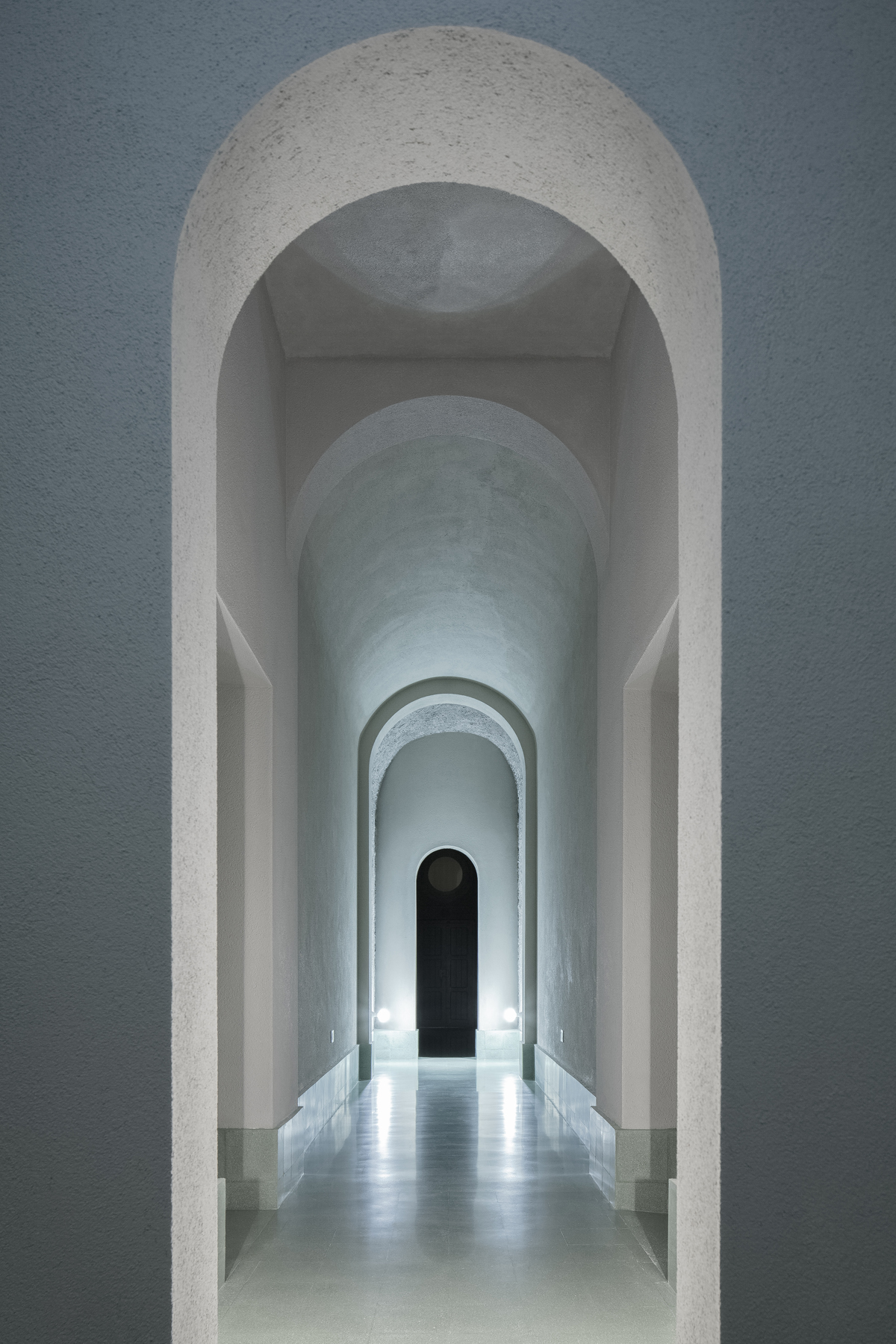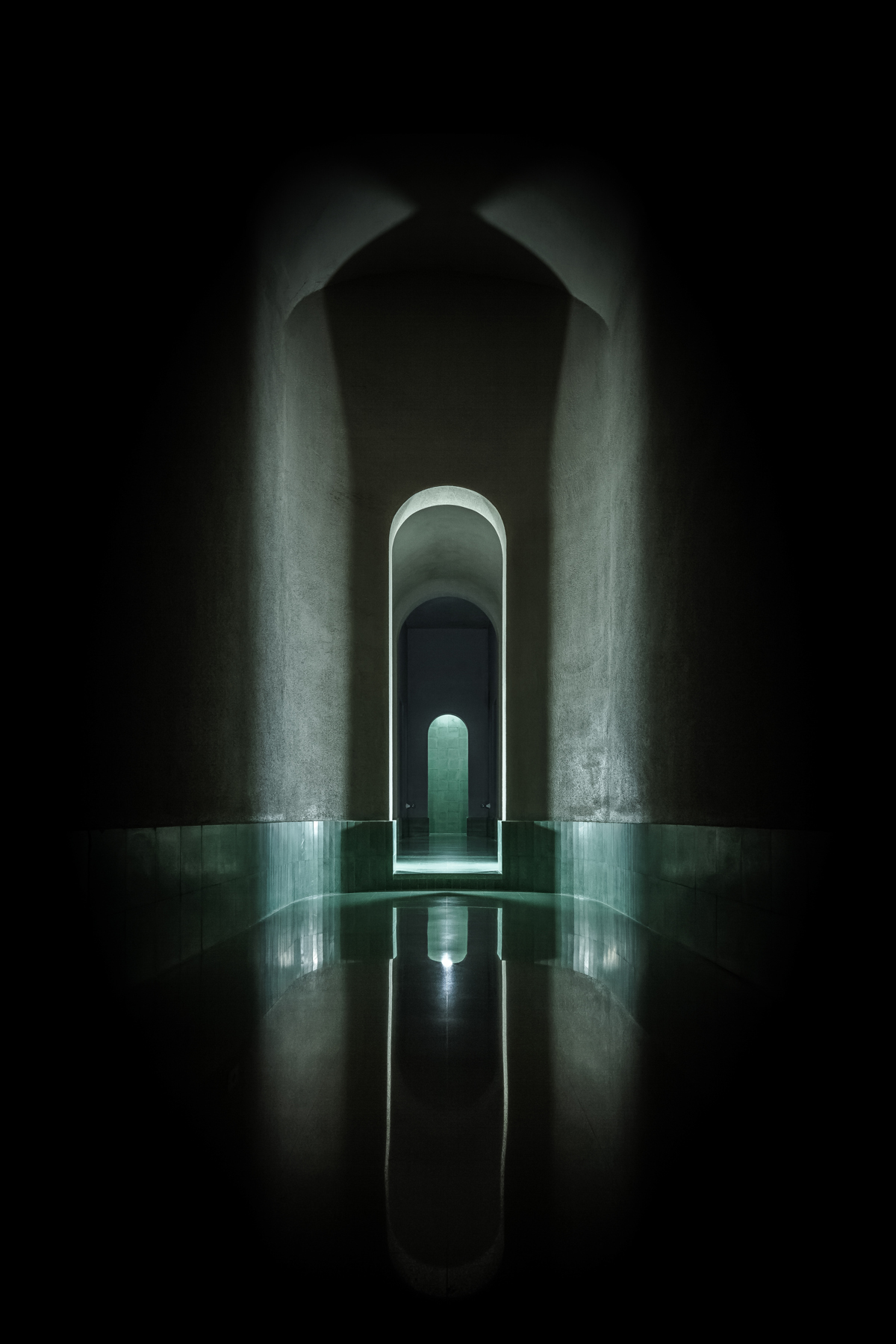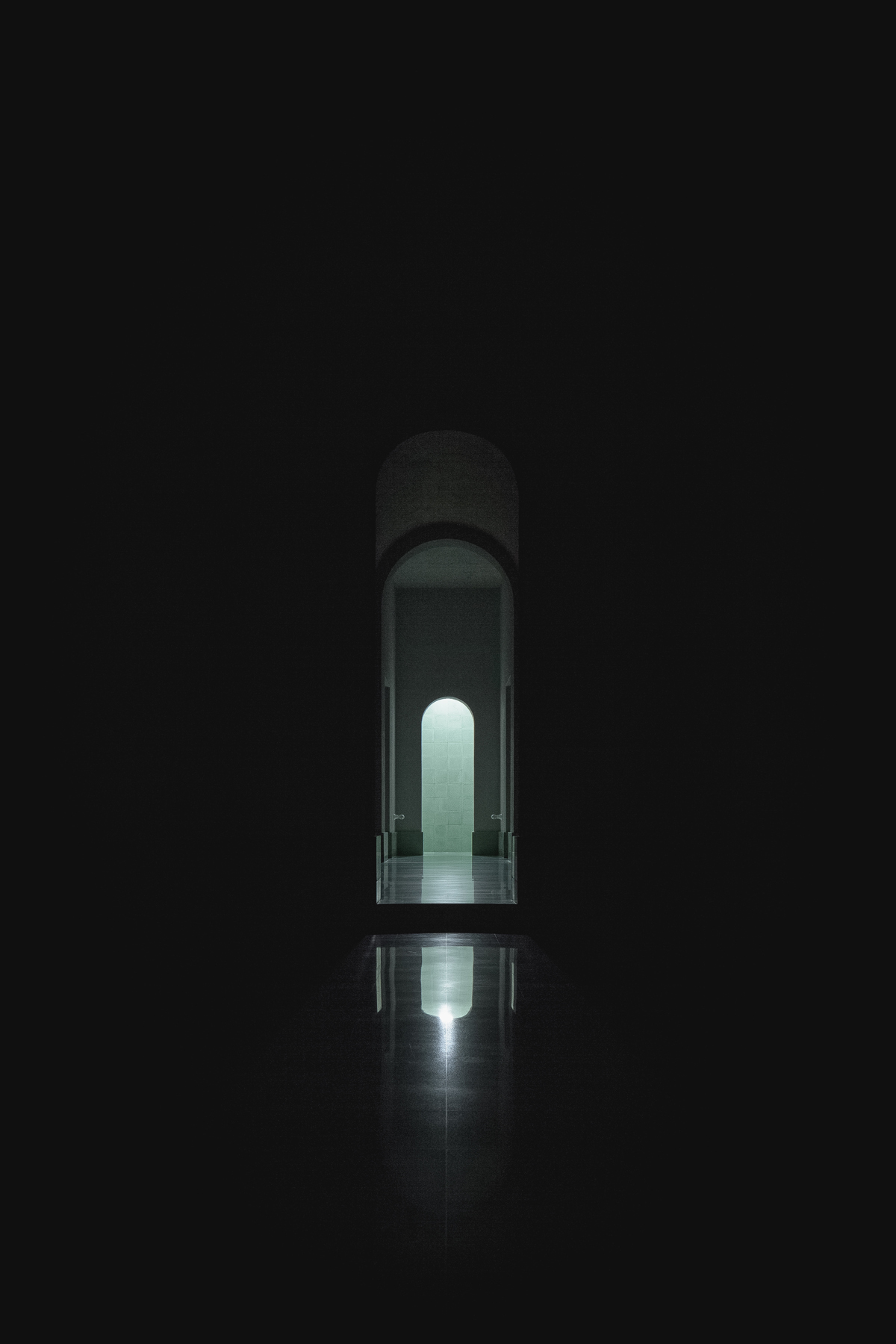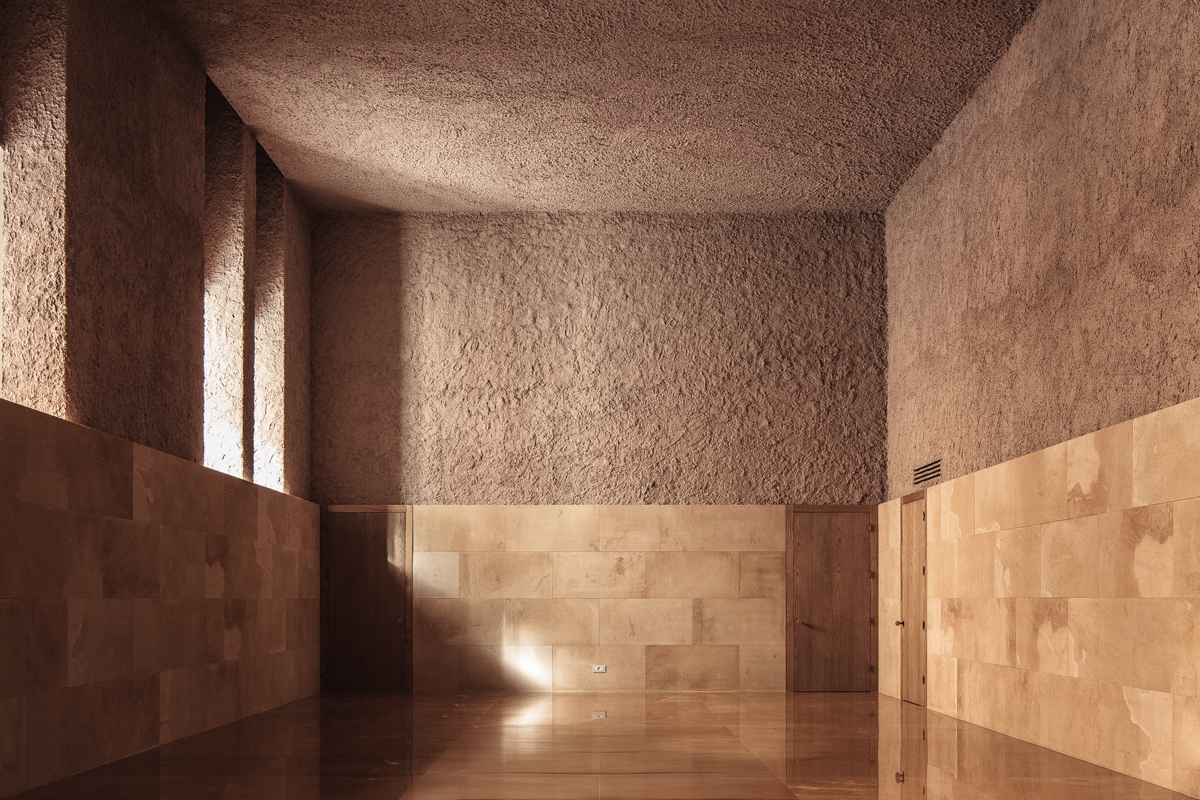Antonino Cardillo Specus Corallii
The Coral Cave is a refuge from the world. A grotto where love can still happen. The place where the city regains its sacral dimension that binds those who were to those who are.
The Coral Cave explores a Pre-Modern idea: when architecture was imagination and the city was the labyrinth of memory. That labyrinth renewed every day with the caresses of our eyes; that speaks to us, mutedly, of lives lived. The image is the place where the dead speak to the living. Where it confirms the idea of life as permanence and tradition. Without this silent dialogue, the city dies; entertainment and alienation take over neutralizing the subversive potential of love.
The Coral Cave speaks of the sacred that comes from the sea. The cadence of space recounts the allegories of beauty and metamorphosis imaged from shells evoked by the sediments of the stone base, and corals, to whose willowy asperities alludes the pink asperity of the perpendicular vault. Shells and corals populate the imagery of the town of Trapani. The story of the arrival of the Madonna from the sea and the carved stones of her sanctuary reveal how, along with the tradition of corals, the theme of the shell is a fundamental myth of the sacredness of the city. The colour and tactile surfaces of the Specus rediscover the sensuality of the stone and dust that speak of the place and the bowels of the earth where they were carved. Thus the Coral Cave, with its evocation of a mysterious underwater dimension, relates that consciousness which, from the sea, has sedimented for millennia the sense of the life of the city and its landscape.
The Coral Cave looks like an antique oratory. The classic configuration of its architecture, a rectangle governed by the ‘silver ratio’, makes it available for different uses and interpretations; preventing the dominance of function and technology, always casual and transitory pretexts for architecture, from bringing about the obsolescence of the work.
Biographical note:
Born in Eryx (Sicily), architect Antonino Cardillo studied classical architecture in Rome. There, from 2007 to 2011, he designed seven Imagined Houses which explore the boundaries between ancient and modern languages, all of which were broadly published worldwide. Afterwards, Antonino Cardillo was selected among the thirty finest architects of 2009 by the British Wallpaper* magazine:“Cardillo is one of the most significant architects of our time”, Editor-in-Chief Tony Chambers said of him.
In 2012 he was accused of deception by the German Der Spiegel magazine for his hyper-realistic renderings.The same year, in Rome, near the Villa Borghese park, he began construction of his aesthetic manifesto, the House of Dust. Lending to the space a classical form through this work, Antonino Cardillo reintroduces the themes of the grotto and the arch in the architecture of the present, experimenting with interrupted valences of past in a cohesive whole, rich in meanings. Chosen as one of the fifty works that recount the history of Italian interior architecture at the XXI Triennale di Milano, curator Beppe Finessi said of it: “There are interior designers who magically sweep away all established practice and make a name for themselves with a project destined to became a landmark. We have seen this recently with House of Dust (Rome, 2013).”
This work has been the first of a series of four grottoes inspired in the classical elements of antiquity: earth, water, air, and fire. The other ones are Crepuscular Green (Rome, 2014), Color as a Narrative (London, 2015) and Specus Corallii (Trapani, 2016).
Antonino Cardillo interprets architecture as faculty to transcend the ordinary and his work has been featured in Rotterdam (Chabot Museum), London (John Foxx’s exhibition, Chelsea College of Art, Victoria & Albert Museum, Architectural Association, Sir John Soane’s Museum), Frankfurt am Main (Deutsche Architekturmuseum) and Milan (Palazzo della Triennale).
Other projects by Antonino Cardillo













